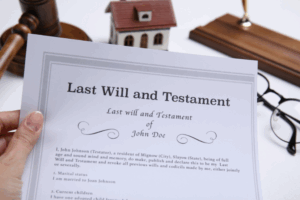Washington state has published its estate tax threshold for 2024. Spoiler alert: it hasn’t changed from 2023. When learning about the estate tax, people generally want to understand how to avoid it. But the first question is not “how do I avoid the tax” but instead, “what is the potential tax?” In order to determine the nature and extent of estate tax mitigation strategies (and their related costs), a sophisticated person knows that she must first understand the magnitude of the tax. A $1 tax bill that costs thousands of dollars to implement is perhaps good tax planning, but might be poor planning nonetheless. It is letting the tax tail wag the dog. Let’s engage in some back-of-the-napkin estate tax calculations to help you determine your own ballpark tax liability.
The first thing to note is that there are two related, but different, estate taxes: federal and state.
For 2024, the federal government imposes an estate tax on estates valued at over $13,610,000 per person. If you are married, you can double that figure to $27,220,000. Estates over that size are taxed at roughly 40%. The federal estate tax will begin taxing estates as “small” as roughly $7M or couples at $14M (approximately). The vast majority of Americans will pay no federal estate tax in 2024 or in 2026. Accordingly, the example below will omit discussion of the federal estate tax and focus on Washington instead.
For 2024, Washington state imposes an estate tax on estates valued at over $2.193M—call that the credit amount. A crucial difference between the state system and the federal system is the inability to automatically double the credit amount to $4.386M for a married couple. The tax starts at 10% on the amount of the estate over $2.193M and can go as high as 20%. Importantly, there is never a tax on assets going to a surviving spouse.
Putting it together with an example, assume Dick and Jane have a total estate of $3M. The total estate includes every single asset owned by Dick and Jane and it even includes life insurance death benefits. Life insurance is generally not subject to the income tax, but it is part of the gross estate for estate tax calculations. With a total estate of $3M, Washington generally presumes that each spouse owns one-half of the total (or $1.5M each). That presumption is courtesy of our community property laws.
Assume Dick passes away first and leaves everything to his wife, Jane. Dick’s estate is valued at $1.5M, which is under the applicable tax threshold of $2.193M. Accordingly, the entirety of his estate passes to Jane free of any estate tax. Now, Jane’s estate increases in value from $1.5M to $3M as she is the sole owner of the estate that was previously owned by both her and Dick.
Assuming no change in assets, when Jane passes away, her estate will still be valued at $3M. Assume further that Jane has an estate plan that gives all her assets to her two children. It is at this point that Washington assesses a tax.
The tax calculation is this: $3M (total estate) minus the $2.193M credit amount, leaves $807K remaining over the credit amount. The tax then is 10% multiplied by the amount over the credit ($807k) for a total estimated tax of $80,700 due within nine months of the date of Jane’s death. The tax amount is typically paid prior to the distribution to the heirs (in this case, Jane’s children). There you have it, the back-of-the-napkin tax calculation.
Two takeaways here are worth highlighting. First, most people will not pay any estate tax (as a percentage of population, most do not have over $2.193M). Second, even if an estate might be subject to an estate tax, the surviving spouse usually pays zero estate tax. It is only after the surviving spouse’s death that estate tax is usually imposed.
Changing the facts slightly, assume Dick and Jane had assets valued at $2.2M. They would have a taxable estate but might be much less interested in any estate tax mitigation efforts as their estate tax would be ($2.2m – $2.193M multiplied by 10%) around $700.
If a couple has an estate valued at over $2.193M, there are some simple ways that same couple can pass double that amount ($4.386M) with the use of a so-called “credit shelter” trust. Folks with more than $4.386M have many other options to mitigate the estate tax as well. But the first step is understanding the magnitude of tax applicable to your estate to help determine your appetite for mitigation.
As the title suggests, this is only a rudimentary calculation, and it omits many important factors. Work with your estate planning professionals to address your individual needs.
**********
The opinions voiced in this material are for general information only and not intended to provide specific advice or recommendations for any individual or entity. This information is not intended to be a substitute for specific individualized tax or legal advice. We suggest that you discuss your specific situation with a qualified tax or legal advisor.












